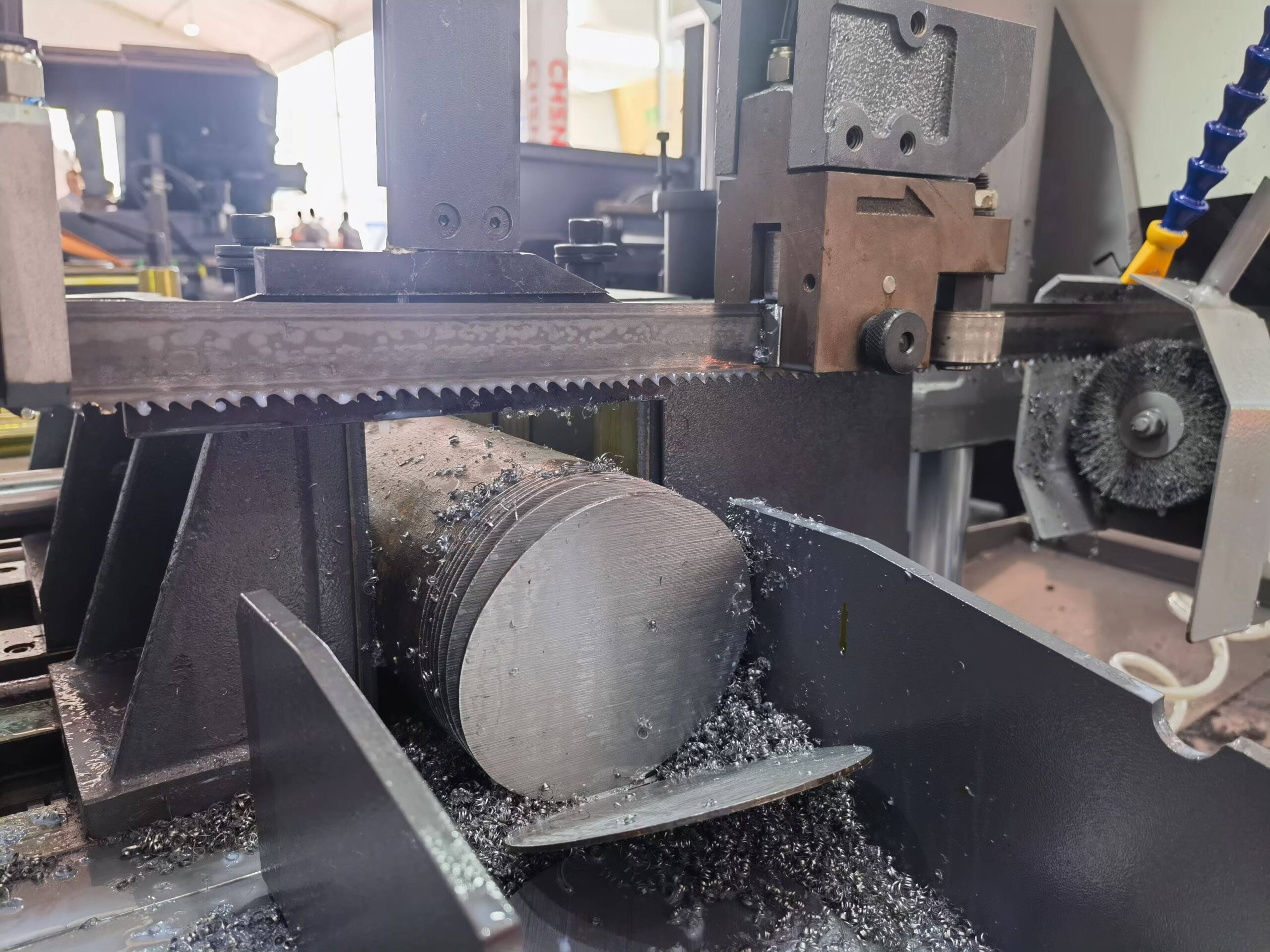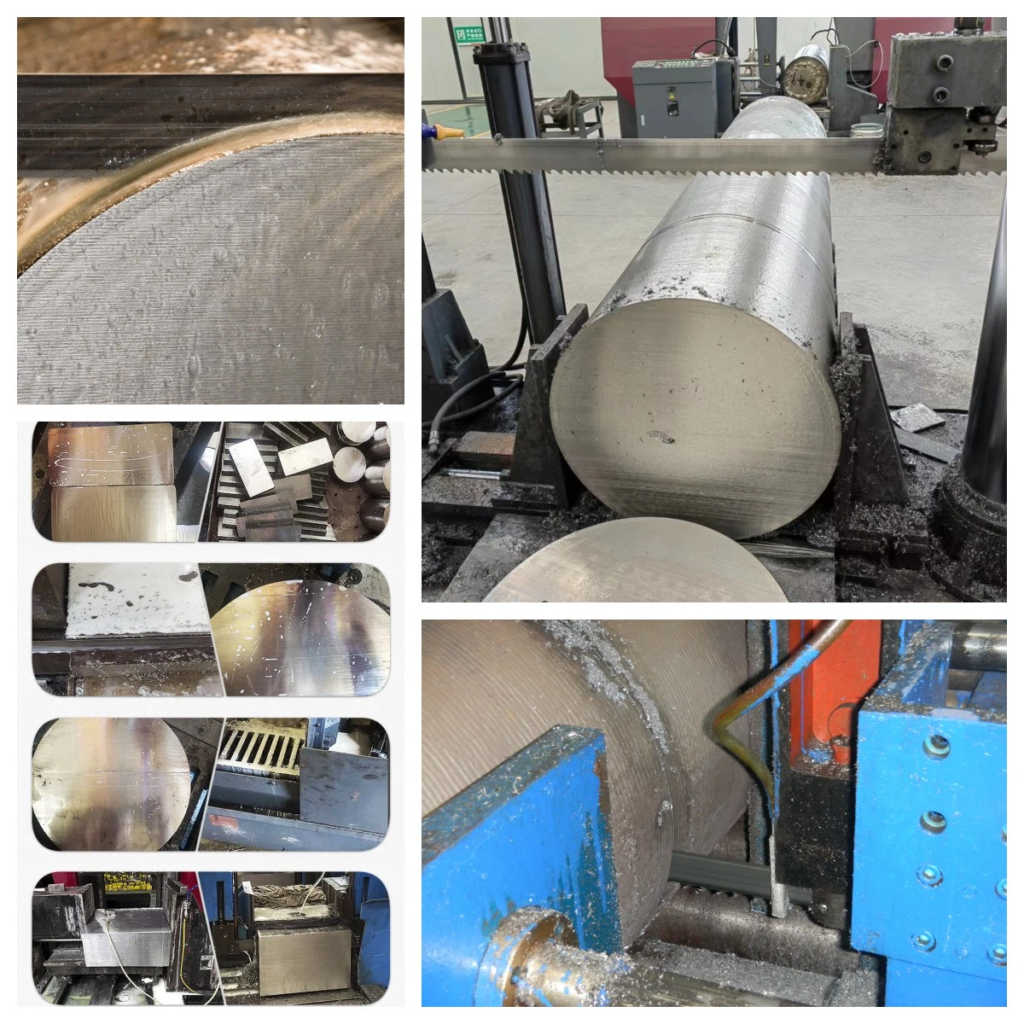Cutting aluminum can be a tricky task without the right bandsaw blade. Picking the wrong blade will result in poor cuts, wearing the blade out quickly, and wasting material. So, how do you find the best bandsaw blade for cutting aluminum? I’m going to help you figure it out.
The best band saw blade for cutting aluminum depends on how thick the material is and the type of cut you need. Generally, a bi-metal bandsaw blade with a moderate tooth count will do a good job for most aluminum cutting. It’s a nice balance between speed and finish. In thin aluminum, you’ll want a fine-toothed blade. You may want a lower tooth-per-inch (TPI) blade in thicker aluminum to help it cut faster.
Keep reading to learn how to pick the right blade for your aluminum cutting and the things that make a difference in blade performance
Why Does Cutting Aluminum Require a Specific Blade?
Aluminum is a soft metal, but it can be challenging to cut because it has a tendency to generate heat and build up on the cutting edge. This can cause the blade to clog. If you use the wrong blade, you’ll get poor cuts, wear the blade out, and possibly have overheating issues. So, you want a bandsaw blade that can handle these challenges of cutting aluminum. You want a blade that can control chip buildup and give you a nice finish.
What Blade Types Work Best for Cutting Aluminum?
Bi-Metal Bandsaw Blades
Bi-metal bandsaw blades are made with high-speed steel teeth that are bonded to a flexible alloy steel backing. This combination gives you durability and wear resistance. That makes them a great choice for cutting aluminum. Ideal for cutting various aluminum profiles, sheets, and thicker sections.
Recommended TPI:
- 6-10 TPI for thicker aluminum materials (over 1/4 inch) to provide fast cutting and good chip clearance.
- 10-14 TPI for medium-thickness materials (1/8 to 1/4 inch).
- 14-24 TPI for thin-walled aluminum and extrusions, providing smoother finishes on thinner sheets.
Advantages
- Durability: Bi-metal blades will last longer than carbon steel blades, especially when cutting larger aluminum sections.
- Versatility: They will cut other non-ferrous metals like copper and brass.
- Cost-Effective: Longer blade life makes them a good investment when you’re cutting aluminum on a regular basis.
Carbon Steel Bandsaw Blades
Carbon steel blades are made entirely of carbon steel and are more economical than bi-metal blades. They are best for occasional use and light-duty aluminum cutting. You’ll find them effective for cutting thin aluminum sheets, profiles, and hobbyist projects where you don’t need heavy-duty performance.
Advantages:
- Lower Initial Cost: If you only cut aluminum occasionally, why spend more money than necessary?
- Good for Light Duty: They work well for hobbyist projects or if you’re just doing some aluminum cutting.
Limitations:
- Shorter Lifespan: They wear out faster than bi-metal blades, especially if you cut aluminum frequently.
- Heat Sensitivity: They generate more heat. So, if you cut a lot of aluminum, you could damage your blade or warp it over time.
Specialty Blades and Tooth Design Considerations
Coated Blades (Carbide-Tipped)
Carbide-tipped blades have carbide coated on the teeth. They offer extreme wear resistance and heat management. People often use them to cut harder metals. But some people find them helpful for cutting a lot of aluminum because they last so long.
These blades are best for production environments with critical cutting speed and blade life. They’re especially good when cutting larger or thicker aluminum sections.
Advantages:
- Superior Wear Resistance: Lasts significantly longer than carbon steel or bi-metal blades.
- High Cutting Speeds: Cuts through thicker aluminum sections quickly.
Limitations:
- Higher Cost: The upfront investment is higher, but the longer life can offset this in high-volume settings.
- Specialized Use: Overkill for light-duty cutting; best for industrial use.
What Is the Optimal Tooth Per Inch (TPI) for Cutting Aluminum?
Choosing the right TPI is crucial to get smooth cuts and to avoid clogging when you’re cutting aluminum. Here’s how TPI affects the cutting process:
- Lower TPI (6-10 TPI): Good for cutting thicker aluminum sections (over 1/4 inch). When you have a lower TPI, the blade has fewer teeth in contact with the material. This allows it to cut faster and gives you better chip clearance.
- Medium TPI (10-14 TPI): Good for cutting medium-thickness aluminum sheets and general-purpose cutting. It’s a balance between cutting speed and smoothness.
- Higher TPI (14-24 TPI): Best for cutting thin-walled aluminum tubes, extrusions, and sheets. When you use a higher TPI blade, you get a smoother cut. It also reduces the chance of burrs or rough edges on your cut.
How to Maintain Bandsaw Blades for Cutting Aluminum?
Proper maintenance of your bandsaw blade extends its life and ensures clean cuts. Here are some tips:
- Keep the Blade Clean: Aluminum builds up on the teeth of the blade, and this reduces the blade’s ability to cut. Clean the blade with a brush or some cleaning solution.
- Use Cutting Fluids: When you’re cutting aluminum and you use a cutting fluid, it helps reduce friction and heat. This gets you smoother cuts and a longer blade life.
- Check for Wear: Look at the blade for wear. If you see any chipped teeth or the blade looks dull, it’s time to replace it. A blade that’s not cutting well will burn up your material and give you a bad cut.
- Adjust Blade Tension: Make sure you have the blade tensioned properly. When you’re cutting aluminum, the blade needs to stay in alignment. If the blade isn’t tensioned properly, it will wander and give you a bad cut.
Choosing the Best Blade for Your Needs
Considerations for Selecting the Right Blade:
- Cut Quality vs. Speed: You'll want a finer TPI blade if you want smooth, clean cuts. If you want to cut faster, you’ll want a lower TPI blade, especially when you’re cutting thicker material.
- Material Thickness: When you’re cutting thicker aluminum, you’ll want a lower TPI blade. This will help remove the chips better. When you’re cutting thinner material, you’ll want a higher TPI blade. This will help you avoid rough edges.
- Frequency of Use: If you’re cutting a lot of aluminum, getting a good bi-metal or a carbide-tipped blade is worth the investment. That way, you’ll get a good blade life and won’t have to change your blade as often.
Recommended Blade Options:
- For General Aluminum Cutting: A bi-metal blade with 10-14 TPI will do a good job for most applications.
- For Thin Aluminum Sheets: Use a carbon steel blade with 14-24 TPI. You’ll get a smoother finish.
- For Thick Aluminum Blocks: Use a bi-metal blade with 6-10 TPI.
- For High-Volume, Tough Applications: A carbide-tipped blade will hold up better when you’re cutting a lot of aluminum.
Conclusion
The best bandsaw blade for cutting aluminum depends on a few things, like how thick the material is, the quality of cut you want, and how much you’re cutting. A bi-metal blade with a moderate TPI will be your best choice for most general applications. It gives you a good balance of life and cutting performance. If you’re cutting thin sheets or doing more precise work, you might want to go with a finer TPI carbon steel blade. Understanding these options will help you get smooth, clean cuts and get the most out of your bandsaw.





